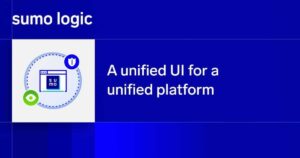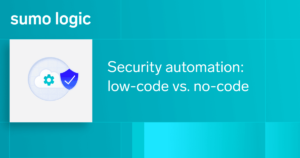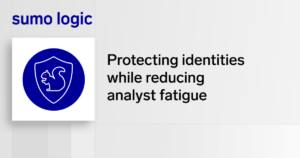Not so long ago we used to hear about a cyber-attack or a new form of vulnerability in the news perhaps on a quarterly or monthly basis. Today, they are becoming increasingly more frequent and I don’t think a day goes by that we don’t read in the headlines about the consequences an organization is facing due to another attack. McAfee recently reported a staggering eight new cyber threats a second in Q4 2017.
With the sophistication of attacks also continuously evolving, the modern CISO is now facing up to the fact and preparing for a “when it will happen” scenario as opposed to “if it will happen,” as cyber incidents become more inevitable. Based on this, their cybersecurity strategy is being turned on its head and instead of focusing more on how to prevent an incident from occurring in the first place, they are now heavily investing in technologies and solutions to help identify, manage and contain an incident, in order to minimize the impact to the organization when it does occur.
In larger enterprises today, it is common to have a Security Operations Center (SOC) and/or a Computer Security Incident Response Team (CSIRT) to monitor, manage and respond to incoming security alerts, but with this, there are numerous challenges that are continuously being faced. Our recent blog “How to Implement Incident Response Automation the Right Way” specifically addressed the challenge of increasing volumes of alerts, resulting in an exponential volume of mundane tasks, and discussed how utilizing automation should be implemented to overcome this. In reality, the number of challenges faced by security operations centers is probably much higher than what we will cover in this blog, but here are our top five, which we believe are currently having the biggest effect on SOCs and CSIRTs today.
Top 5 challenges faced by Security Operations Centers
1. Increasing volumes of security alerts
With the snowballing number of security alerts being received, valuable analyst time is being consumed sorting through a plethora of security alerts. Most commonly, time is wasted performing a multitude of mundane tasks to triage and determine the veracity of the alerts, often resulting in alerts being missed or those of more damaging consequences slipping through the net as they are overlooked. As you can probably imagine, analysts’ time would be better spent working on the more sophisticated alerts that need human intervention, as well as proactively threat hunting, in order to minimize the time from breach discovery to resolution.
2. Management of numerous security tools
As a wider range of security suites are being adopted by SOCs and CSIRTs, it is becoming ever more difficult to effectively monitor all of the data being generated from the multiplying number of data points and sources. A typical Security Operations Center (SOC) may use a combination of 20 or more technologies, which understandably can be difficult to monitor and manage individually. It is therefore important to be able to have a central source and single platform to summarize all of the information as it is being generated and to be able to have a helicopter view of your overall security environment to manage, monitor, and measure security operations and incident response processes effectively.
3. Competition for skilled analysts and lack of knowledge transfer between analysts
With the global cybersecurity talent shortage to hit 1.2m by 2020 and to increase to 1.8m by 2022, the pool of suitable analysts will only continue to diminish over time, with the level of competition becoming more fierce for analysts that have the required skill set. As with most companies and industries, workforce comes and goes, but knowledge transfer is particularly important within a security operations center and incident response teams, in order to ensure the correct response and process takes place within the minimal amount of time, reducing the time to incident detection and time to incident resolution. This lack of knowledge transfer can inevitably lead to increased response times and wasted resources.
4. Budget constraints with security incidents becoming more costly
As within most organizations large or small alike, budgets are always restricted in some way, shape, or form. In order to authorize spending, a clear positive ROI usually needs to be forecast and/or proven. Security operations and incident response are notoriously difficult to measure, monitor and manage, so justifying spend is always difficult. With the increasing number of cyber-attacks, organizations are increasing the level of investment in cyber security tools, but what level of spending is necessary, and what amount outweighs the benefits it will achieve? Can you put a price on the consequences of a potential incident such as a data breach, knowing you will likely face a hefty fine, as well as brand and reputation damage?
5. Legal and regulatory compliance
Meeting a growing number of legal and regulatory compliance such as NIST, PCI, GLBA, FISMA, HITECH (HIPPA), and GDPR to name a few, as well as industry best practices, will inherently have an impact on any organization, but can have a heavy bearing depending on the specific industry or geographical location. Using the example of the upcoming Global Data Protection Regulation, taking effect on May 25, 2018, it is even more important for security operations centers to have mandatory processes and procedures clearly in place which are conducted in a legally and policy-compliant manner. Providing sufficient incident reporting and breach notification within the required parameters (in the case of GDPR to notify the supervisory authority within 72 hrs of a breach) is going to be key, or the legal, financial and reputational impact and repercussions could be significant.
Based on these five challenges alone, enterprise SOCs and CSIRTs are struggling to remain efficient and effective and are increasingly being forced to do more with less, while striving to keep up with the current threat landscape and a plethora of security alerts.
With security incidents becoming more costly, enterprises need to find new ways to further reduce the meantime to detection and resolution. As a result, security and risk management leaders will see the business need to invest in Security Orchestration, Automation and Response (SOAR) technology and tools, such as the Cloud SOAR platform from Sumo Logic, to help improve their security operations proficiency, efficacy, and quality, in order to keep their cyber incident under control.



